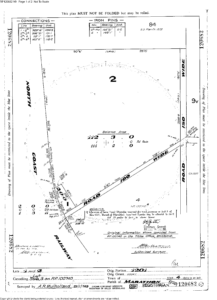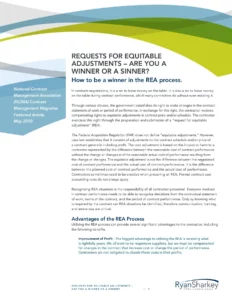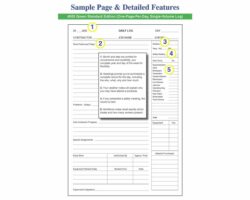In the dynamic world of construction, expecting a project to unfold precisely as initially planned is often an unrealistic dream. Changes are not just possibilities; they are inherent parts of almost every project, driven by everything from unforeseen site conditions and client requests to material availability and regulatory updates. Navigating these modifications efficiently is paramount to keeping a project on track, within budget, and free from disputes.
Without a robust system for tracking these shifts, what begins as a minor adjustment can quickly spiral into significant delays, cost overruns, and strained relationships between stakeholders. This is where a clear, comprehensive method for documenting every alteration becomes not just helpful, but absolutely critical for project success and overall peace of mind.
Why a Construction Change Order Log Template is Essential for Project Success
Imagine a construction project without a clear record of modifications. It’s like trying to navigate a complex maze without a map, where every turn you take could lead to an unexpected dead end. In construction, these dead ends often manifest as financial disagreements, schedule disruptions, and a breakdown in communication among contractors, clients, and subcontractors. Unmanaged change orders are a primary culprit behind budget explosions and project delays, transforming what should be a smooth progression into a battleground of claims and counterclaims.
When a new client request comes in, or an unexpected geological issue arises on site, quick decisions are often made to keep work moving. However, if these decisions aren’t immediately documented and their ripple effects properly assessed, they can create significant issues down the line. A lack of proper documentation can make it impossible to justify additional costs or explain why a particular task took longer than originally estimated, leaving contractors vulnerable to absorbing losses that are not their responsibility.
The Unforeseen Realities of Construction
Every construction project, no matter how meticulously planned, will encounter surprises. Weather events, supply chain interruptions, or even a client deciding on a different finish for the interior can all trigger a change order. Without a standardized system, each of these changes becomes an isolated incident, subject to individual interpretation and memory, which are notoriously unreliable when it comes to contract disputes. A proper log ensures that every detail, no matter how small, is captured and retained.
Streamlining Communication and Accountability
A construction change order log template provides a single, centralized source of truth for all project modifications. This transparency is invaluable. Everyone involved can see the status of each change, who authorized it, what its financial and schedule implications are, and when it was implemented. This level of clarity significantly reduces misunderstandings and fosters a culture of accountability, where responsibilities are clear and disputes are minimized. It ensures that communication flows smoothly and that all parties are literally on the same page regarding project scope and expectations.
The real power of having a dedicated construction change order log template lies in its ability to bring order to potential chaos. It helps prevent "scope creep" from going unnoticed, provides concrete evidence during billing cycles, and supports claims for time extensions or additional costs when necessary. It is an indispensable tool for project managers who aim to maintain control over their projects and ensure profitability.
Key Components of an Effective Construction Change Order Log Template
To be truly effective, a construction change order log template needs to capture specific, crucial pieces of information that allow for comprehensive tracking and analysis. It’s not just about listing that a change happened, but understanding the full context and impact of that change. A well-designed log acts as a historical record, a financial tracker, and a communication tool all rolled into one, enabling seamless project management from start to finish.
The data points included in your log will be the foundation for accurate cost accounting, schedule adjustments, and resolution of any potential disagreements. Each entry needs to be granular enough to provide a clear picture without being overly cumbersome to update. The goal is to make documentation efficient and straightforward, encouraging consistent use by all team members who are authorized to initiate or approve changes.
Beyond just tracking individual changes, a robust template allows you to analyze trends over time. Are certain types of changes more common? Do they originate from specific stakeholders or particular phases of the project? This kind of insight can be incredibly valuable for future project planning, helping you anticipate potential issues and build more resilient contracts from the outset. Furthermore, a consistently maintained log serves as a professional record that can be presented to auditors, clients, or legal teams, demonstrating diligent project oversight.
Here are some essential fields you should consider including:
- Change Order Number: A unique identifier for easy referencing.
- Date Initiated: When the change was first proposed.
- Description of Change: A detailed explanation of what needs to be altered.
- Reason for Change: Why the change is necessary (e.g., client request, unforeseen condition, design error).
- Impact on Cost: Estimated or actual cost increase or decrease.
- Impact on Schedule: Estimated or actual extension or reduction in project duration.
- Status: Pending, Approved, Denied, Implemented.
- Approval Date: When the change was officially approved.
- Approved By: Who authorized the change.
- Responsible Party: Which team or individual is responsible for implementing the change.
- Notes/Comments: Any additional relevant information or communication.
Implementing a standardized construction change order log template is more than just good practice; it’s a strategic move towards greater project control and predictability. It empowers project teams to manage alterations proactively, ensuring that every shift in scope is documented, approved, and its impact fully understood before it affects the bottom line or timeline. This commitment to detailed record-keeping not only protects all parties involved but also fosters an environment of trust and professionalism throughout the entire construction lifecycle.
Ultimately, by leveraging a well-structured log, you can transform what is often a source of tension into a manageable process that supports project continuity and successful delivery. It’s an indispensable tool for maintaining clarity and control in the inherently unpredictable environment of construction, laying the groundwork for more efficient operations and stronger stakeholder relationships on every endeavor.



